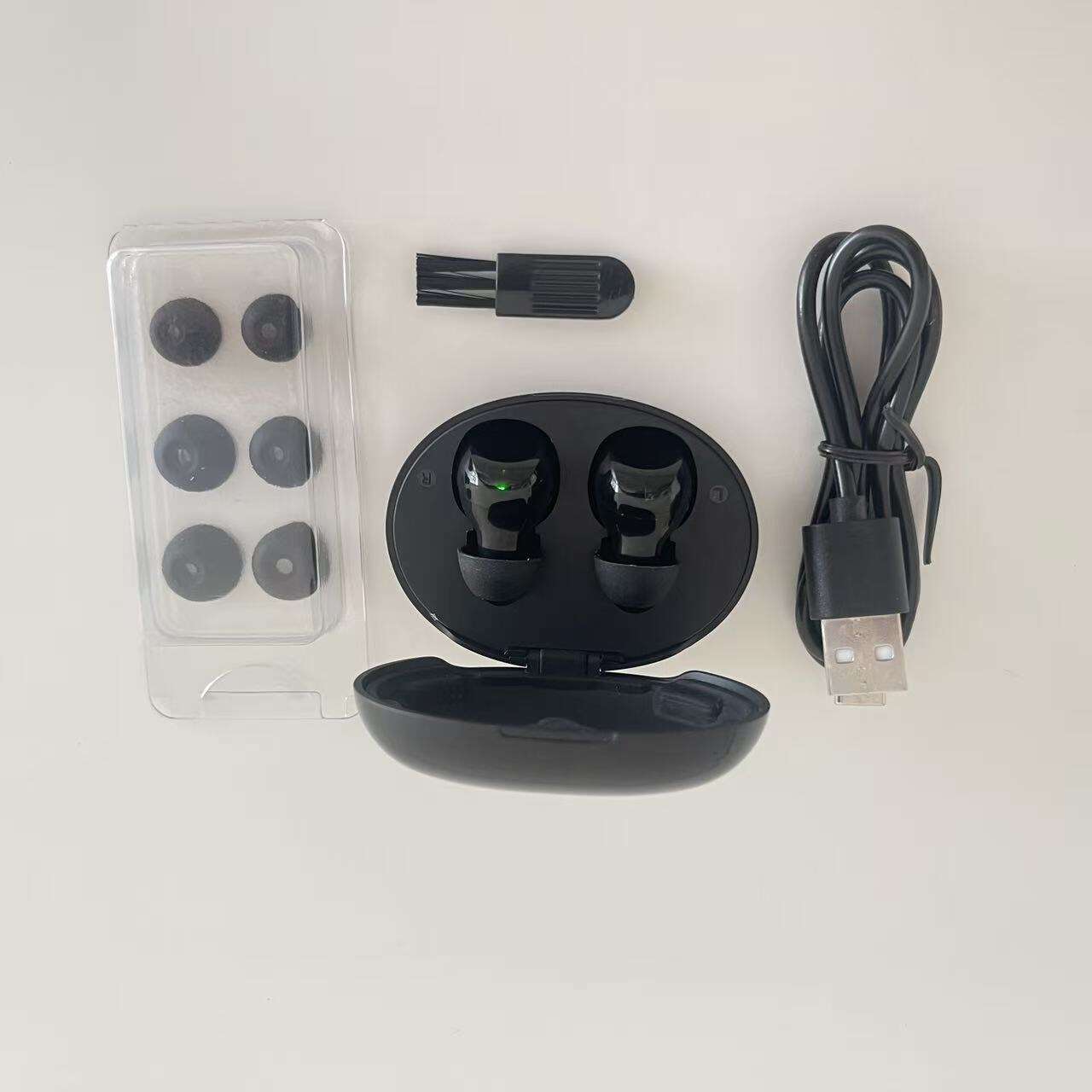Enhancing Speech Recognition with Clearer Auditory Input
Understanding how hearing aids support clearer auditory input
Modern hearing aids work their magic mainly because they boost sounds between about 500 to 4000 Hz - right where most people talk normally. When someone starts losing their hearing, those little s sounds, sh noises, and f articulations tend to disappear first. That's why these devices focus so much on this frequency range. The best models do more than just amplify though. They actually cut down on all that annoying background chatter and restaurant clatter while adjusting how loud things sound based on what each person specifically needs to hear better. This makes conversations way easier to follow without everything sounding too loud or distorted.
The role of amplified sound in improving speech recognition
Amplification makes soft speech audible without distorting louder sounds, preserving vocal nuances critical for understanding tone and intent. A 2024 analysis of 1,200 users found that 68% could follow one-on-one conversations more effectively with hearing aids than without.
Impact of directional microphones and noise reduction on understanding speech
Directional mics work by focusing on sounds coming from directly ahead while cutting down on background noise around 6 to 12 decibels. These devices often come with smart software that learns to ignore constant noises like cars passing by outside or the hum of air conditioning units inside. This kind of selective listening makes conversations much clearer. Some tests done in simulated restaurant environments showed people could catch almost half again as many words (about 43%) when they switched from regular omnidirectional mode to these advanced directional settings with noise reduction turned on.
Evidence from clinical studies on improved communication abilities with hearing aids
Research from the Journal of the Acoustical Society of America back in 2024 found that people who wear hearing aids performed about 58 percent better when trying to understand speech in noisy environments compared to those without them. Participants who had hearing aids equipped with directional mics and noise cancellation powered by machine learning saw the biggest improvements. These advanced features helped boost their ability to pick out sentences in background noise by roughly 3.2 decibels on average, according to the study results.
Reducing Miscommunication and Cognitive Load in Daily Life
How Untreated Hearing Loss Leads to Frequent Misunderstandings
When hearing loss goes untreated, the brain has to work overtime trying to guess what's missing from speech, which often leads people to misunderstand important words. Studies show around one out of every three words might be missed in normal conversations according to the Audiologic Health Institute report from last year. Things get even worse when there's background noise, like at a restaurant or coffee shop. Research finds comprehension levels can plummet by about 60% compared to talking somewhere quiet. This makes it harder to follow along properly and increases chances of saying something awkward or just pulling back from social situations altogether.
Hearing Aids as Tools for Reducing Listening Effort and Mental Fatigue
Modern hearing aids make it easier to follow conversations because they boost what people are saying while cutting down on all that background noise. According to research published last year, folks who wear these devices actually use about 23 percent less brainpower when trying to keep up with chats compared to those without them. What does this mean in real life? People can stay focused during important business meetings or catch up with family over dinner without feeling mentally drained afterward something many know all too well from struggling to hear without help.
Controversy Analysis: Do All Hearing Aid Users Experience Reduced Cognitive Strain?
While studies report average cognitive load reductions of 18–27%, outcomes depend on three key factors:
| Variable | Impact on Cognitive Benefit |
|---|---|
| Daily Wear Time | <4 hrs/day shows 40% less benefit |
| Device Customization | Properly programmed aids double stress reduction |
| User Expectations | Unrealistic goals correlate with higher frustration |
Although benefits aren't universal, longitudinal data show that 82% of consistent users experience measurable reductions in communication-related fatigue within six months.
Encouraging Active Participation in Social and Group Conversations
Regaining the Ability to Engage in Group Discussions and Social Gatherings
Modern hearing aids enable users to rejoin multi-person conversations by filtering background noise and amplifying high-frequency speech cues. Clinical evidence shows 74% of users reported better quality interactions in group settings within six weeks of regular use, helping reverse the social isolation linked to untreated hearing loss.
Getting the Full Context in Discussions Through Improved Hearing
Directional microphones that are advanced enough let people concentrate on whoever is speaking right in front of them, about eight feet away, without getting distracted by things like dishes clattering around or traffic outside. The way these mics work gives users better sense of where sounds are coming from, so they can pick up on how someone's voice changes and when they speak. This means people don't have to ask others to repeat themselves as often. A study back in 2022 found that participants needed to clarify what was being said 63 percent less frequently when multiple people were talking at once.
Trend Analysis: Rise in Social Engagement Through Improved Hearing
Post-pandemic trends show a 40% increase in social activity participation among hearing aid users compared to non-users (American Auditory Society, 2023). Enhanced auditory clarity is closely tied to greater confidence in attending crowded events such as conferences, dinners, and performances.
Strengthening Personal Relationships and Emotional Well-being
Improving communication in relationships with partners and family
When hearing loss goes untreated, it really puts a strain on relationships. A study back in 2018 found that around two thirds of partners felt frustrated because they kept misunderstanding each other. Hearing aids make all the difference though. They help people pick up on those soft changes in voice that matter so much in communication, while also cutting down background noise that can be so distracting. The National Communication Survey released in 2025 showed something interesting too: most families who got some kind of hearing assistance noticed better times together. Whether sitting down for dinner or having deeper chats about how everyone feels, these folks just seemed happier overall with their family life.
Increased confidence in communication due to reliable hearing support
With improved auditory input, users experience 40% less mental effort during conversations (Audiology Journal, 2023), allowing them to focus on meaning rather than deciphering words. Seventy-two percent of first-time users report feeling more confident initiating discussions at social gatherings or asking colleagues to repeat complex instructions without embarrassment.
Psychological benefits of reduced social isolation with hearing aids
According to a study from Johns Hopkins University back in 2022, people who use hearing aids actually experience about 28% fewer cases of depression compared to folks who don't treat their hearing problems. This finding fits right in with what we've known for years now. Research going back to Waldinger and Schulz in 2015 shows that when people maintain good social connections, they tend to be around 34% happier with life overall. Hearing devices really do make a difference here. They let individuals join in on community activities and have real conversations again, which builds emotional strength. And this matters a lot at times when life throws curveballs, such as when someone retires or loses a loved one.
FAQ
Do hearing aids amplify all sounds equally?
No, modern hearing aids focus on amplifying sounds in the frequency range crucial for speech while reducing background noise.
Can everyone benefit equally from using hearing aids?
Results vary based on daily wear time, device customization, and user expectations. Consistent users often experience the most benefits.
How do directional microphones work in hearing aids?
They focus on sounds directly ahead and minimize background noise, using smart software to enhance important conversations.
Do hearing aids reduce cognitive load?
Yes, many users report reduced mental effort during conversations, but this can depend on various individual factors.

